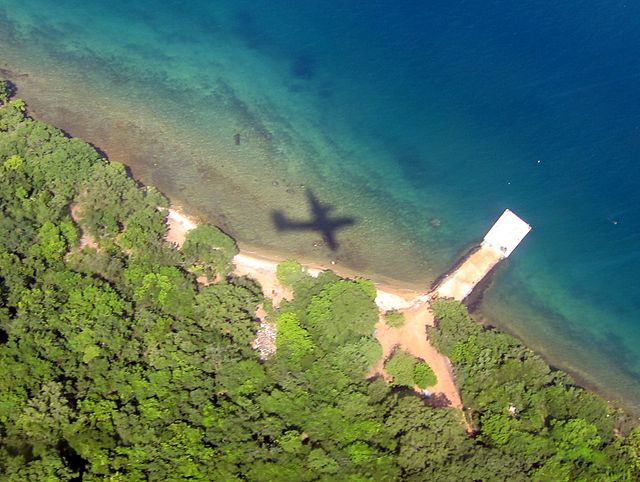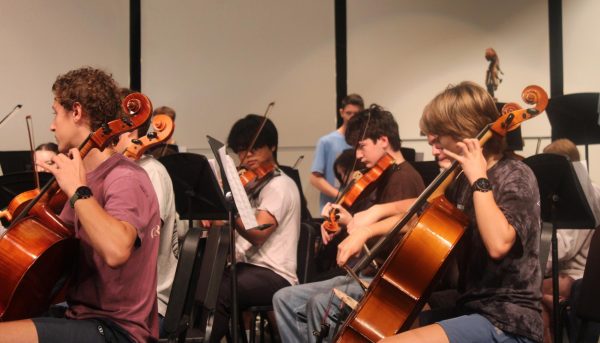MH370: The Theories
Three of the most popular theories of what happened to the plane that sparked the worlds greatest aviation mystery in history.
Netflix has just released a documentary following the biggest mystery in aviation history, the disappearance of Malaysia Airlines Flight 370. It’s been nine years since the incident took place, and there have been countless theories about what could’ve happened. Here are the three big ones that the Netflix doc covers.
The first theory is the most widely accepted. It’s very straightforward, simple, and easy to explain. The pilot of flight MH370 committed suicide and took the lives of 238 others with him.
Theory 1: The Pilot
Shortly after 1:00 in the morning, The pilot, Zaharie Ahmad Shah is flying over the South China Sea. He is responsible for 11 crew members, and 227 passengers, making their way to Beijing on a routine red-eye.
At this stage, air traffic control in Kuala Lumpur calls up and says, “Malaysian 370 contact Ho Chi Minh 120, decimal 9. Good night.”
MH370 is about to be handed over to the next set of air traffic controllers, who are in Vietnam. So Zaharie says, “Goodnight Malaysian 370.”
He’s now in a kind of gray zone, in between two areas of air traffic control. Nobody’s paying attention to him.
Maybe he says to the co-pilot, “Hey buddy, why don’t you go in the back and get me something.”
The co-pilot closes the door, Zaharie locks it. Now he’s about to implement his big plan. He turns off all of the electronics that make the plane visible to the outside world.
It vanishes from radar.
At that moment, everybody else aboard the plane, everything was routine.
Zaharie is in complete control, and nobody knows anything about it. He grabs the yoke, and pulls it into a hard left turn. He heads back towards the Malaysian peninsula.
But then, perhaps the co-pilot realizes he’s been locked out of the cockpit. Zaharie knows that he’s going to have a very hard time keeping control of the plane. So, maybe he starts depressurizing the cabin.
Everyone is confused. But what a lot of the passengers don’t realize is that the oxygen generators in these emergency masks only work for about 10 minutes. The captain has a more sophisticated, longer lasting mask.
Soon, the entire cabin is quiet.
Zaharie turns the plane to the south, and he flies straight into the darkness, waiting for his fuel to run out.
After six hours of flight, the engines stop running, Zaharie pushes the nose down, and he starts to slide into a dive.
The plane crashes into the southern Indian Ocean.
The second theory involves three Russians that were confirmed to be aboard the plane. Many believe that the three Russians were working together to hijack the plane.
Theory 2: The Hijack
It’s 1:15 in the morning. Zaharie is flying over the South China Sea in the dark of a cool, calm night. Passengers, tired and anticipating a boring overnight flight.
The three Russians aboard the plane begin their operation.
Somewhere over the South China Sea, someone’s making a ruckus near the first class compartment. The flight attendants hurry to see what’s going on. As this happens, the Russian in first class slips forward. He lifts the carpet, and raises a hatch into the electronics bay.
Down in the hatch, the Russian is surrounded by banks of computers. He’s in the nerve center of the airplane, the electronic brain. He plugs into the computer of the plane’s flight control system.
The plane moves closer and closer to the edge of Malaysian airspace. The people aboard the plane still have no idea what’s happening.
Now the plane is in this operational no-man’s land, where nobody’s looking at them.
Inside the electronics bay, the Russian agent turns equipment on, and the plane vanishes from the air traffic controller’s radar screens.
He now has complete control over the aircraft.
The captain and the co-pilot are confused as the lights blink on their display. None of their communications equipment is working. Then, even more shockingly, the plane suddenly banks violently to the left. The plane is in maneuver that neither one of them has commanded.
Down in the electronics bay, the Russian agent has started to depressurize the airplane, letting the air out of the cabin. At the same time, he turns a knob on an oxygen bottle stowed on the wall, which cuts off the emergency oxygen systems that the pilot and the co-pilot rely on.
In the cabin, the masks fall down from the ceiling. The flight crew suddenly realizes that they can’t breathe. In the minutes that follow, the captain and co-pilot lose consciousness.
And the cabin falls quiet.
The Russian agent in the electronics bay has turned the plane towards the northwest, and has deliberately altered data that had previously pointed that the plane had been going south.
Now, if anyone looks towards the trail of digital breadcrumbs that the plane’s about to leave, they’ll misinterpret the signal as meaning that the plane has gone south. When in fact, the plane is actually going north.
MH370 proceeds onward through the night, receding gradually from its phantom twin. The plane ultimately winds up over the deserts of central Kazakhstan.
For the hijackers, it’s mission accomplished.
The third theory revolves around the United States shooting it down, due to the cargo it was carrying on board. MH370’s cargo list noted that 2.5 tons of electronics, including lithium batteries, walkie-talkies, and accessories, were being carried in the plane. However, the cargo was loaded without being scanned, which caused people to believe that it contained highly sensitive U.S. technology.
Theory 3: The Intercept
On that night, some very mysterious and suspicious cargo, without having been scanned, and which has been delivered under escort, is loaded on MH370.
The plane takes off as planned, 41 minutes after midnight. It reaches its cruising altitude over the South China Sea. Everything is completely normal.
At 1:19 AM, MH370 is requested to change over to Vietnamese airspace. Captain Zaharie sounds off with his now infamous “good night.”
So MH370 enters a no-man’s land, and this is the perfect moment for an interception to take place.
It’s possible, in that moment, the two US AWACS, which are planes that are capable of jamming radar signals, move into action and jam MH370, making it disappear from the radar.
Now, MH370 cannot communicate. Maybe it receives an order from the AWACS to go and land somewhere nearby.
When captain Zaharie receives the order, it’s possible he says, “No.” He may have not accepted the order. He continued on his planned route, going to Beijing. The tension would have continued to increase as Zaharie refused the orders.
Eventually, MH370 is getting close to Chinese airspace. So the AWACS have to back off. And, as horrible as it may seem, they still need to stop the plane and its precious cargo from arriving in Beijing.
So, either through a missile strike, or a midair collision, MH370 met its fate.







